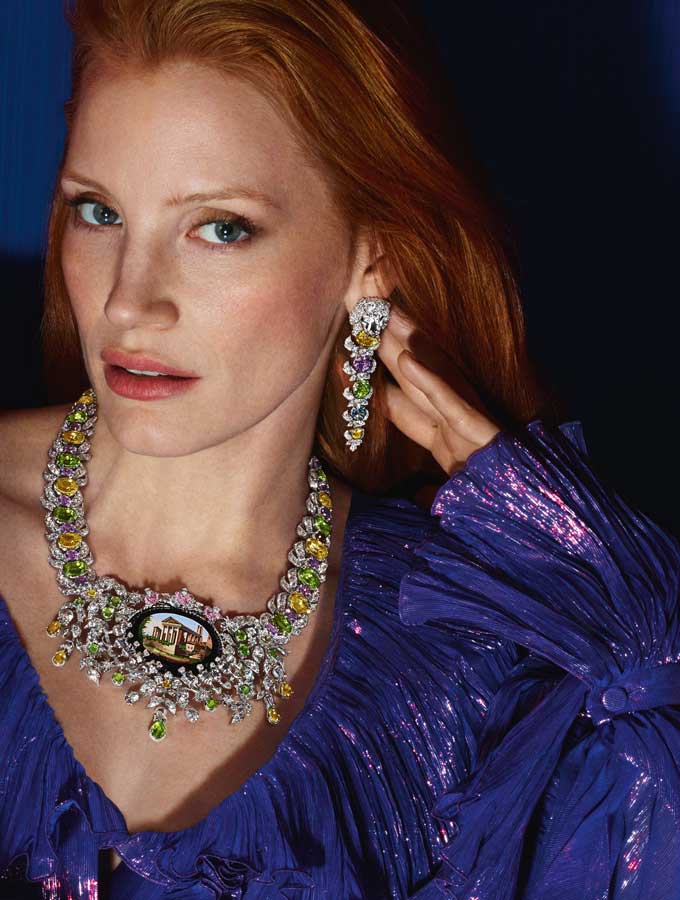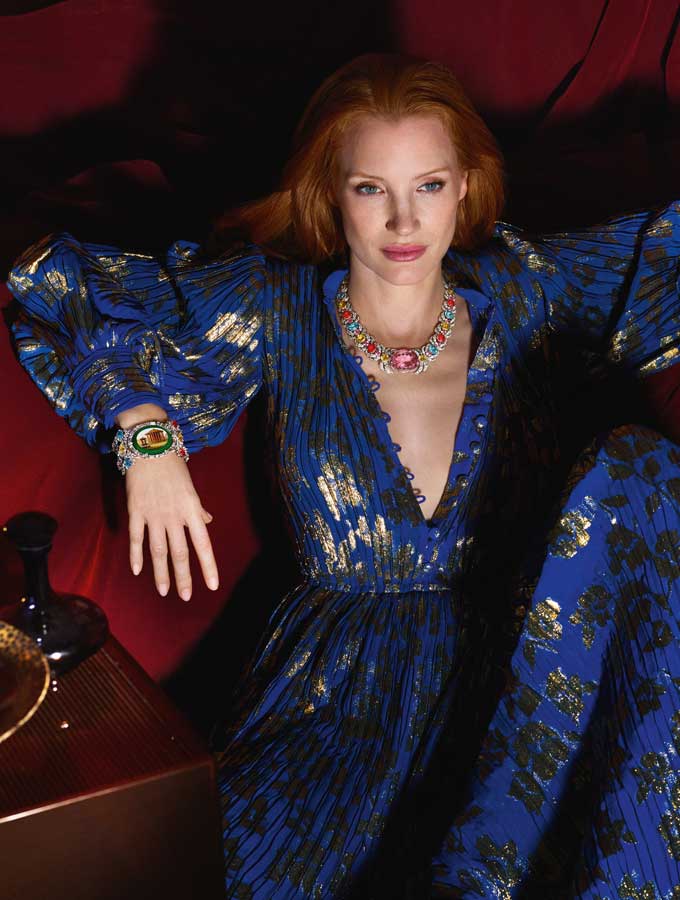To wander around the hallowed halls of the Villa Albani-Torlonia in Rome, being surrounded by its vast collection of art and antiquities numbering to the hundreds—a collection which includes masterpieces even top museums around the world shall be grateful to possess—was a privilege that one would dearly remember for as long as time allows. Lauded as the cradle of neoclassicism, this villa has survived 275 years of history, its sprawling grounds of towering pine woods and oak-lined avenues leading to an exquisite parterre remaining mostly intact well into the 21st century, under the auspices of the Fondazione Torlonia.
Commissioned in 1747 by the Cardinal Alessandro Albani who had an impressive collection of classical art, the villa’s interiors are frescoed entirely in marble. Desiring to stay true to French philosopher René Descartes’s maxim of never leaving any space empty, the Cardinal also had it filled to the brim with sculptures, mosaics, and stuccoes over floors, walls, and ceilings, as well as every nook and cranny as far as the eye can see. Among the names involved in its conception and design was the German art historian, JJ Winckelmann, whose role in the rise of neoclassicism can never be downplayed.
Villa Albani-Torlonia with its stellar collection, numerous fountains, statues, elegant stairways and frescoes was much more than a place of residence, but a cultural venue. A de facto stage for lively conversation, concerts, forums and ceremonies held in favour of the arts.
As such, it embodied the highest expressions of the antiquarian taste which defined Rome as the ultimate destination of the European custom known as the Grand Tour, especially for generations of art students who came in search of inspiration from the (then) newly discovered Greco-Roman ideals. And this inescapable sensory overload, this miasma of devastating beauty, was precisely the frame of mind that Alessandro Michele wanted to relay at Gucci’s presentation of its new Hortus Deliciarum high jewellery collection one bright summer morning.

Hortus Deliciarum is the third high jewellery collection by Gucci in as many years, and it is also the fashion house’s most expressive one to date. Composed of unique pieces all of which were designed by its creative director and divided into five core themes, the collection takes us on an imaginary Grand Tour of different destinations, timelines, and locales. Michele’s flair for excess and a maximalist aesthetic writs ever larger in high jewellery, a liberty he takes with childlike glee.
“What I’m doing is just to explore, in the same way as I do with clothes and all the other things. It is just my way of working. I’m navigating a crazy world of stones, inspiration, history… things that come from the Georgian era, English jewellery, Italian jewellery… Finally I’m trying to bring my passion and know-how into this area,” he shares.
Yet by looking at his creations, it is apparent that Michele isn’t simply here to repeat ancient history. “I’m that kind of person that doesn’t care where an idea came from. I want to play with it like a kid, you know. Let’s try to do something that looks like a Georgian era jewel, or we can do something with the French tremblant [style]. I was just playing in such a beautiful way and now it’s already been three years. I think that working with beautiful things is one of the most interesting things for a fashion designer or any designer. It’s like a trip.”
Fittingly, the new Hortus Deliciarum collection is styled as the high jewellery equivalent of a Grand Tour and naturally that includes Michele’s home city of Rome. As a matter of fact it begins in Rome. He chronicles a dreamlike journey around the city, seeing and touching all the beautiful landmarks in their original splendour. His “vehicle” of choice in this case would be the antique micro-mosaic pieces taking pride of place in necklaces, bracelets, earrings, brooches, and pendants. An beloved Roman tradition, these handcrafted antiques date between 1850 and 1870, and were especially popular worn as jewellery during the Grand Tour period.

Michele adds, “I was thinking about how beautiful the idea was that jewellery can tell a story. In the past, these specific jewels were really like little movies, little storybooks. I collect micro-mosaics from the 18th and 19thcenturies. I find them fascinating because with them it becomes not just about the gold or the high jewellery, but the work, the time spent getting crazy about all those little pieces.”
Depicting iconic sights of Rome, from the Colosseum and Piazza San Pietro to the Pantheon and the Roman Forum, as well as the Temple of Vesta, the Temple of Hercules at Cori, the Tivoli waterfalls, and the Pyramid of Cestius, the cameos are each framed with coloured enamel and then set in gold. Elevating them into the realm of high jewellery are a bevy of precious gemstones including diamonds in an array of different cuts and a full spectrum of coloured gemstones such as peridots, beryls, spinels, topazes, opals, tourmalines, and more.
After Rome, Hortus Deliciarum sojourns farther afield into exotic India, land of the Maharajahs. This is where the collection begins to take on a kaleidoscopic beauty. Bold, rich colours evoke the lush greenery and powerful geometrical forms bring to mind the subcontinent’s many royal palaces. Gemstones in fiery tones align with strands of woven gold, accentuated by diamonds and enamel.

Meanwhile, pearls make an appearance for the very first time in Gucci high jewellery, but they’re nothing like the kind of classic strings of pearls your grandmother would wear. “If you want to say something new to the market, you can do it. Do something that hasn’t been done before. Because I’ve felt that high jewellery in recent years was just about super precious stones. I like to open up crazy conversations, thinking what would happen if we did something new but also interesting. It’ll be like we’re opening up new doors in the same playground.”
Hortus Deliciarum is the third high jewellery collection by Gucci in as many years, and it is also the fashion house’s most expressive one to date.
His refreshing take on high jewellery allowed Michele to see gemstones through a markedly different lens. The fourth chapter of Hortus Deliciarum swings by New York in 1930s where modernism abounds and skyscrapers reach for the skies. Shapes move from fluid and organic to strong and geometric, even asymmetric and constructed with structural details. All that orderliness is then abruptly yet expertly deconstructed with grandiose stones.

Lastly, Hortus Deliciarum arrives at the final chapter of Michele’s long travel diary—a time, rather than a place: the 1970s. Arguably his favourite era. Here is where psychedelic colours and fabulous shapes intermingle with absolutely no restraint. Among the many highlights, a sautoir necklace set with a jaw-dropping 172.4-carat Colombian emerald steals the show. Extraordinary not just for its incredible size but also its unique cut, this hexagonal portrait-cut stone was like a picture painted of inclusions. Also known as jardins, the unique pattern sweeps in from the side of the stone towards its centre, like a tidal wave just about to crash onto the shore.
Remembering the first time he set eyes on the stone, Michele smiles. “I was dying,” he effuses, “I was at home when they sent me pictures of the stone. I’d never seen anything like it. It was very emotional for me. I was imagining who might the owner be, what the colour was in real life, and the inclusions… I was already dreaming of putting the stone in a sautoir. They asked me if I’m sure about it, so I said ‘please try to buy it’ and we got it. It’s like a fairy tale, you know? And then when I saw it in reality, I just couldn’t believe that nature can create something so beautiful.”

He lavished his wildest fantasies on this exquisite stone, imagining it as something an aristocratic British family might have acquired whilst going through India, then setting it into a hippie-chic sautoir and finally wearing it across the Atlantic in the New World. Michele paired it with a geometric white gold and diamond chain, and set it with red enamel griffes designed like the claws of a mythical beast—a style that is flamboyant by choice and not classical in the least, but a hundred per cent Gucci, and a thousand per cent Alessandro Michele.
Indeed, as a fashion designer and an ardent jewellery lover, Michele ought be dubbed the new enfant terribleof high jewellery. The one who revels in breaking down barriers just to see if something wonderful might come out of it. “I was just trying to dream,” he says of his approach to high jewellery, “I am pretty obsessed with jewellery, I collect jewellery. I think that gemstones and things that belong to that kind of work is a space that doesn’t exist, like between the sky and the earth. Jewels are like stars to me, it’s all just,” he sighs, “amazing.”





